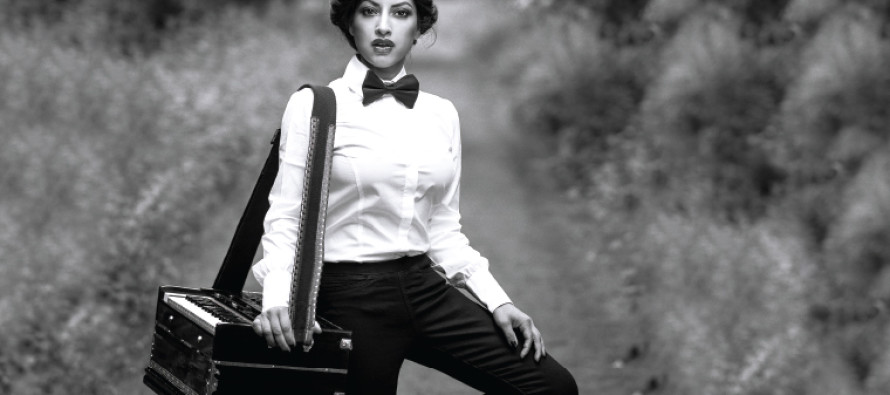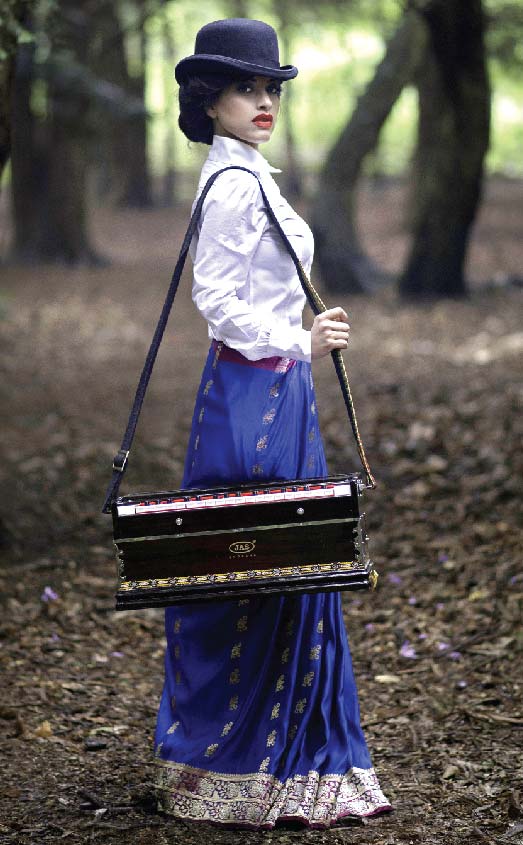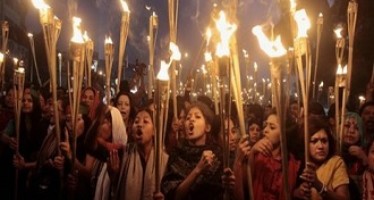Shapla Salique – Rooting for Lalon

by ICE Today: Pursuing Lalon with an Eastern and Western twist, her song Baula Gaan has received appreciation worldwide. In a conversation about life, inspiration and Lalon, Shapla walked us down her memory lane.
Your grandfather Azfar Ali was involved with music. To what extent has this served as a stepping stone for your career in music?
My Dada – “the man behind the music” – that’s what I call him!
He was a singer, songwriter and a musician. He was incredibly talented, and without a doubt the person that started it all. He was the one who planted the musical seed in most of us – me, my father and several others in our family.
However my father has been the main influence on me. It was my father who encouraged and trained me to become a singer. I also believe that developing a passion for music at a very early age has definitely given me the maturity and confidence to focus on my own solo music career.
Lalon never gets old, it only gets better. Despite having so many renditions of Lalon songs, what are the challenges of bringing something new to the table? Why do you think so?
That’s the beauty of his poetry and melodies – however it’s fascinating to see how far his music has come, and more so where I can take it. To be honest I didn’t really face any challenges as such, it happened naturally through experimentation. Introducing Western instruments to Lalon songs, and blending them delicately allowed me to keep my music organic and authentic. For me keeping the melody original is very important, but at the same time I believe music needs to evolve. We as artistes have a responsibility to keep Lalon’s music alive, keep it fresh and current to pass on to future generations.
In the UK where the language is predominantly English, how were your performances received by the audience?
The audiences out here have been amazing! It’s such a challenge to deliver Lalon’s songs to an audience who has never heard Bengali music before. It sometimes feels like I’m representing my country, I don’t want to let my country down, that’s what it feels like. But when I’m on stage seeing diverse backgrounds and cultures and their incredible reactions – it’s priceless! It really is a privilege to make music and then to share it with people; I never take that for granted!
It’s great receiving messages and emails from new fans – saying they have ‘Never been able to connect with Bengali music until they heard my songs.’ To be able to have that impact is so inspiring for me.
What genres do you try to incorporate in your versions of Lalon? How were you able to blend the different styles and still keep the originality of the songs?
I don’t try to incorporate any particular genre to my renditions of Lalon’s songs; it’s more about finding what sounds great and works for each song. Baul songs delve into soul searching, hence everything needs to flow naturally. I blend Western instruments which works rhythmically and responds well with the melodies of my songs. This needs to be done carefully and delicately; otherwise it’s easy to lose the originality of these songs. The main focus is the melody and how the song is being delivered. Various people have called and compared my music to jazz, soul, funk, and I’m happy to have those opinions – my music is open to interpretation.
‘Distance makes the heart grow fonder.’ Since you have been away from Bangladesh for so long, what role has this saying played in shaping your music into what it is today?
I love Bangladesh, it is my home and always will be.
I was lucky enough to be born in Bangladesh, and raised there until I was around five years old. Then I lived in London, before returning to Bangladesh in my teenage years. My musical influences are very diverse across multiple cultures, and this transcends into my life, both musically and personally. I have a very deep connection with my tradition and culture, but at the same time I try to balance both with my style of music.
You’ve created an iconic style with your grameen check turban and your harmonium, which has not been done by anyone in the current music scene. What inspired you to come up with this?
My music focuses on Bengali folk fusion. For me, my image is an extension of my musical creativity so it all helps when coming up with a new idea or look.
The turban and the harmonium are inspired by the original Baul singers who used to travel from village to village with their Ektara – only in my music video Baula Gaan, I am seen travelling from the past and into the present with my harmonium. I think styling is a great way to express yourself just like music and letting people know who you are.
Original source at http://icetoday.net/2016/02/rooting-for-lalon/
Related Articles
Australia and Bangladesh settle air services arrangements
Direct flights between Australia and Bangladesh are a step closer following the signing of an inaugural air services Memorandum of
Bangladesh hangs Islamist leader Abdul Kader Mullah
He is the first person convicted by Bangladesh’s International Crimes Tribunal (ICT) to be executed. The ICT was set up
একাত্তরে হত্যার অভিযোগ : মাওলানা আবুল কালাম আজাদের বিরুদ্ধে মামলা
মুক্তিযুদ্ধের সময় হত্যা, লুটপাট ও ধর্ষণের অভিযোগে ফরিদপুরে বাংলাদেশ মসজিদ মিশনের চেয়ারম্যান মাওলানা আবুল কালাম আজাদ ওরফে বাচ্চু মিয়া ও







